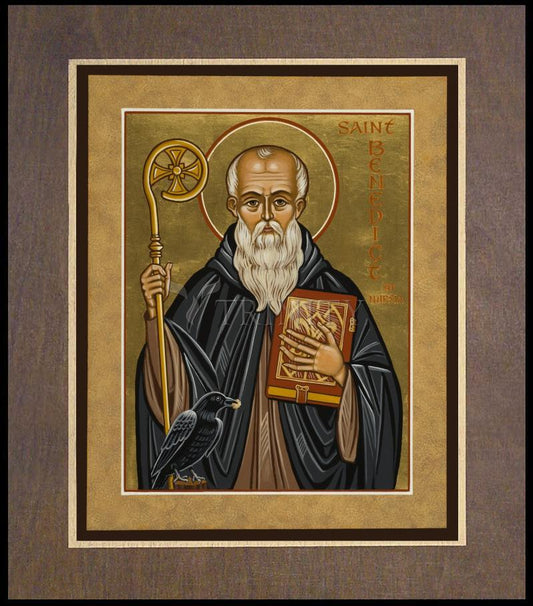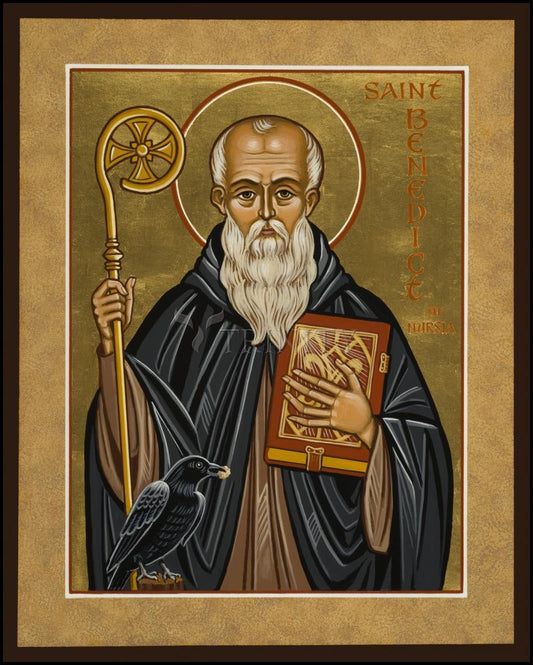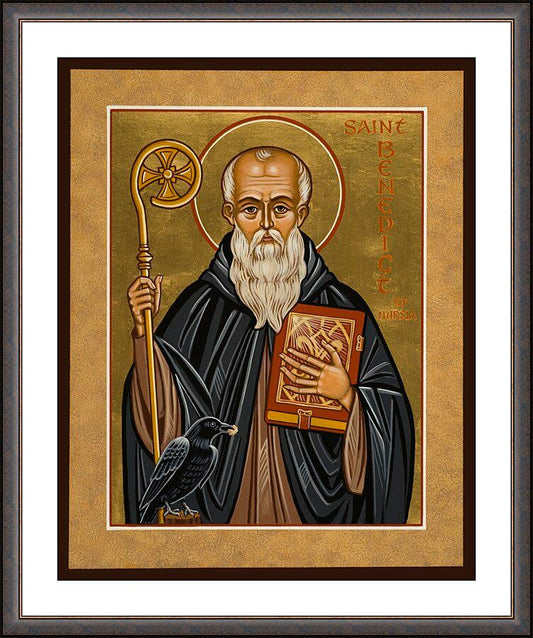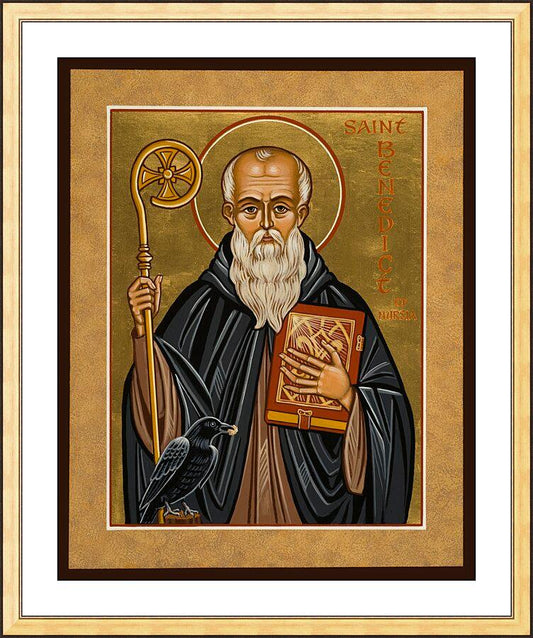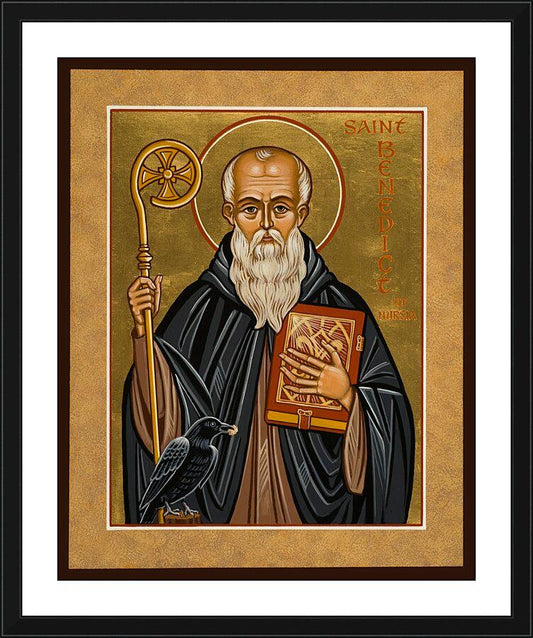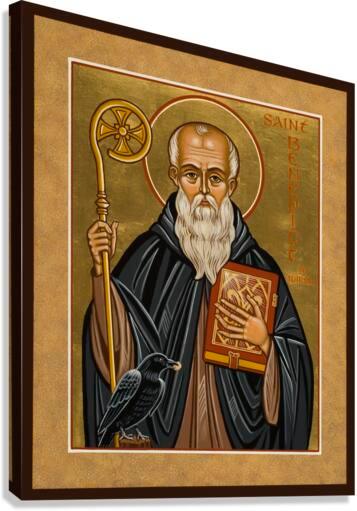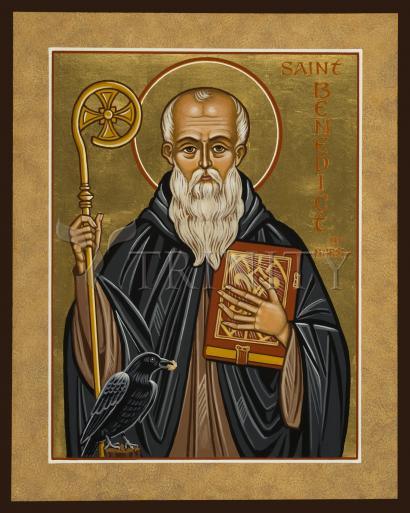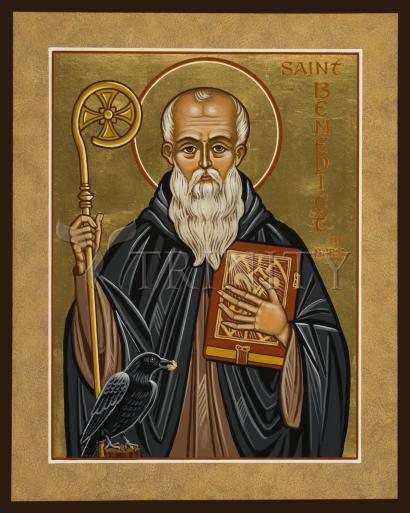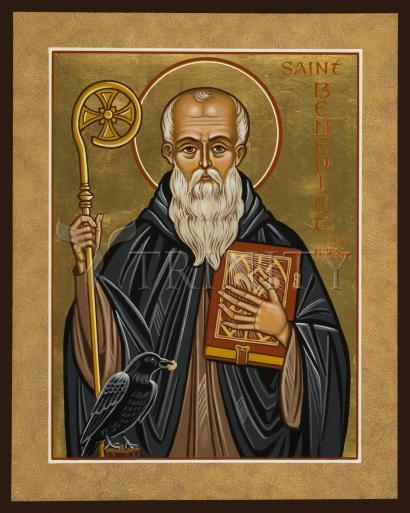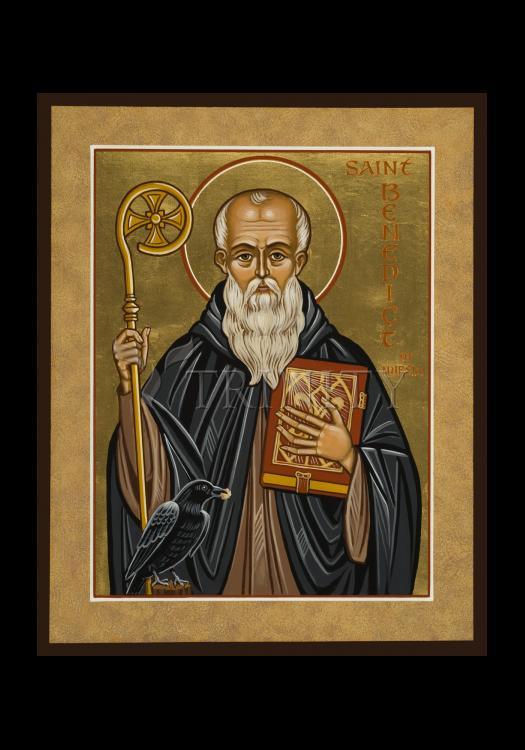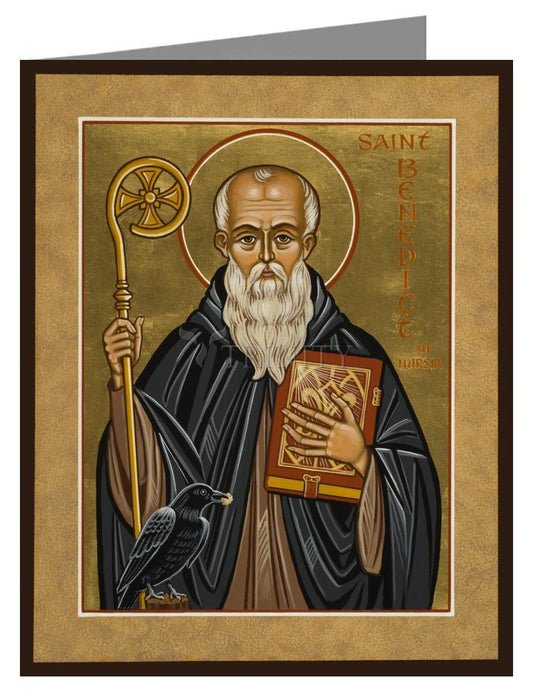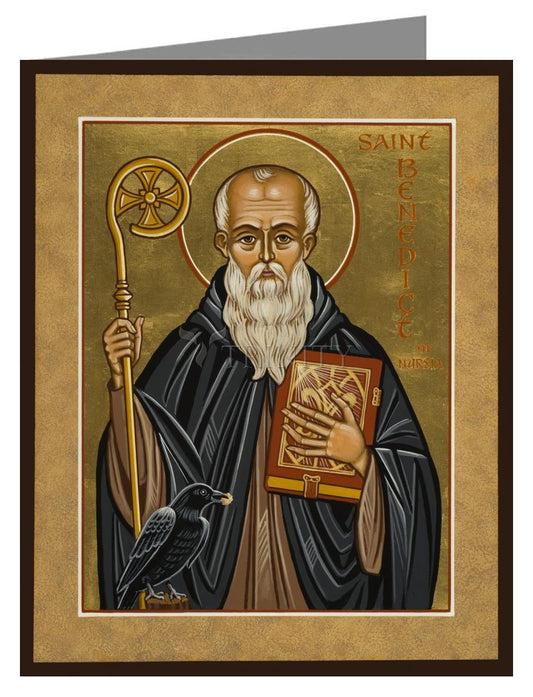St. Benedict, the Father of Western monasticism and brother of Scholastica, is considered the patron of speliologists (cave explorers). He was born in Nursia, Italy and educated in Rome. He was repelled by the vices of the city and in about the year 500, fled to Enfide, thirty miles away. He decided to live the life of a hermit and settled at the mountainous Subiaco, where he lived in a cave for three years, fed by a monk named Romanus.
Despite Benedict's desire for solitude, his holiness and austerities became known and he was asked to be their abbot by a community of monks at Vicovaro. He accepted, but when the monks resisted his strict rule and tried to poison him, he returned to Subiaco and became a center of spirituality and learning. He left suddenly, reportedly because of the efforts of a neighboring priest, Florentius, to undermine his work, and in about 525, settled at Monte Cassino. He destroyed a pagan temple to Apollo on its crest, brought the people of the neighboring area back to Christianity, and in about 530 began to build the monastery that was to be the birthplace of Western monasticism. Soon disciples again flocked to him as his reputation for holiness, wisdom, and miracles spread far and wide.
He organized the monks into a single monastic community and wrote his famous Rule prescribing common sense, a life of moderate asceticism, prayer, study, and work, and community life under one superior. It stressed obedience, stability, zeal, and had the Divine Office as the center of monastic life; it was to affect spiritual and monastic life in the West for centuries to come. While ruling his monks (most of whom, including Benedict, were not ordained), he counseled rulers and Popes, ministered to the poor and destitute about him, and tried to repair the ravages of the Lombard Totila's invasion. He died at Monte Cassino on March 21 and was named patron protector of Europe by Pope Paul VI in 1964.
His feast day is July 11.



